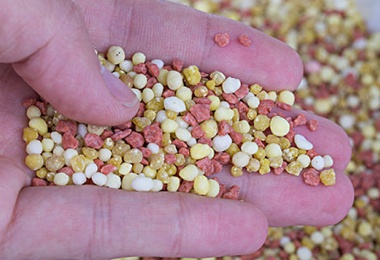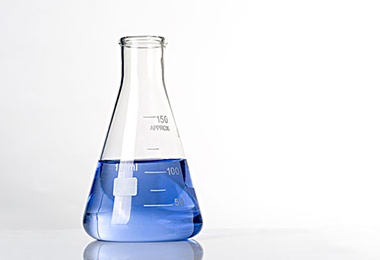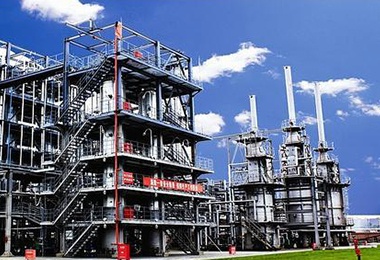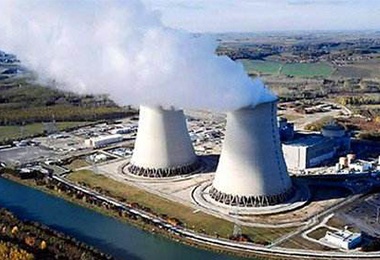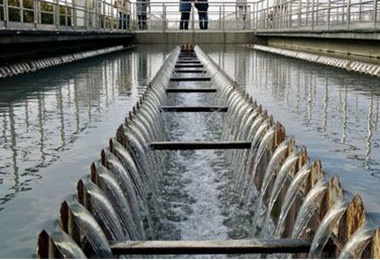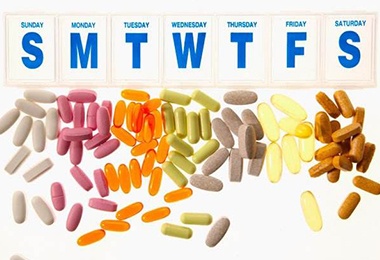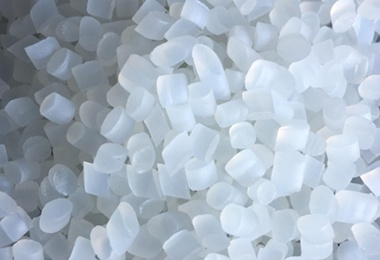Catalysts are substances that change reaction rates without changing the
total standard Gibbs free energy in reactions. More than 90% of chemical
processes need to use catalysts. More than 20% of industrial products are
produced through catalytic process. Similar to the classification of other
specialty chemicals, petrochemical catalysts can be classified by function and
market sectors. By application area, they can be classified into petroleum
processing catalysts and chemical reaction catalysts. By function, there are polymerization
catalysts, reduction catalysts, oxidization catalysts, etc. In addition, catalysts
can also be classified by chemical structure into zeolite catalysts, precious
metal catalysts, organolithium catalysts, etc.
Most of catalysts have three distinguishable components: active
ingredients, carriers and co-catalysts.
Active ingredients
Active ingredients are major components of catalysts. They are sometimes
composed of one substance and sometimes composed of several substances.
Classification of Active Ingredients
|
Category
|
Conductivity (reaction type)
|
Example of catalytic reaction
|
|
Metals
|
Conductor (oxidization reaction, reduction
reaction)
|
Selective hydrogenation; selective hydrogenolysis;
selective oxidization
|
|
Transition metal oxides,
sulfides
|
Semiconductor (redox reaction)
|
Selective hydrogenation, dehydrogenation,
hydrogenolysis and oxidization
|
|
Non-transition element
oxides
|
Insulator (carbon ion reaction, acid-base
reaction)
|
Polymerization, isomerization, cracking, dehydration
|
Carriers
Carriers are dispersants, adhesives or supports of a catalyst’s active
ingredients. They are skeletons for loading active ingredients. Catalysts
produced through loading active ingredients and co-catalysts onto carriers are
called loaded catalysts or supported catalysts.
Commonly-used carriers with low specific area include corundum, silicon
carbide, pumice, diatomite, asbestos and refractory brick. Commonly-used
carriers with high specific area include alumina, SiO2-Al2O3,
laterite, clay, magnesium oxide, silica gel and activated carbon.
Co-catalysts
Co-catalysts are a small amount of substances added into catalysts. They
are auxiliary components of catalysts. They themselves have no activity or very
low activity. When added into catalysts, however, they can change the chemical
composition, chemical structure, ion valence, pH value, lattice structure,
surface structure, pore structure, dispersion state and mechanical strength of
catalysts and therefore improve the activity, selectivity, stability and
service life of catalysts.
Catalysts need to be used in oil refining processes
such as catalytic hydrogenation, catalytic reforming, isomerization, catalytic
cracking, catalytic hydrocracking and alkylation. Due to differences in crude
oil composition and changes in product requirement, types of catalysts used and
catalyst consumption are also different.
Catalytic hydrogenation is an indispensable process in oil refining
today, which aims to enable the quality of gasoline produced to meet the strict
requirements on sulfur and aromatics contents. Catalytic hydrogenation
catalysts usually contain transition metals such as cobalt, molybdenum and
nickel and use aluminum as carrier. Catalytic hydrogenation catalysts with
molybdenum oxide as primary catalyst and cobalt or nickel as co-catalyst have
merits of high selectivity, easy regeneration and not prone to poisoning. Generally
speaking, cobalt/molybdenum catalysts are more suitable for use in
desulfurization. Nickel/molybdenum catalysts are more suitable for use in
denitrification.
Several processes are available for catalytic reforming based on operating
pressure and catalyst treatment methods, but all catalysts need to be regenerated.
Catalytic reforming catalysts usually contain 0.3-0.6% of platinum and use
aluminum as carrier. To meet requirements on contents of benzene and oxygen in
gasoline as defined in laws and regulations, North America has proposed trimetallic
reforming catalysts. Nitrogen, sulfur, lead and arsenic contained in petroleum
feedstock will poison catalytic reforming catalyst, therefore petroleum feedstock
should be pretreated. When bimetallic catalyst is used, the lead content in
feedstock should be lower than 0.01ppm and the arsenic content should be lower
than 0.002ppm.
Catalysts commonly used in isomerization are platinum group metals,
which need to be impregnated into zeolite or aluminum chloride. The latest
progress in isomerization catalyst sector is to develop products suitable for
use in conditions of low hydrogen/hydrocarbon ratio and low sensitivity to
naphthenic hydrocarbon concentration.
For catalytic cracking, the FCC process has already replaced the earlier
thermal cracking process and fixed-bed catalytic cracking process and become
the major process used today. Reaction catalysts used have also shifted from
silicon/aluminum catalysts to zeolite catalysts. To reduce impacts of nickel
and vanadium contained in crude oil on the activity of catalysts, co-catalysts
need to be added into zeolite catalysts. To convert carbon monoxide in reactors
into carbon dioxide, supported aluminum or silicon/aluminum catalysts need to
be added. To convert sulfur dioxide into sulfates so as to reduce the content
of hydrogen sulfide, metal salt catalysts need to be added. Moreover, to
increase the output of propylene in commercial production, specialty catalysts
have already been successfully developed. DCC process has been used in some
units to increase the output of propylene, but DCC process is more demanding in
operating conditions than FCC process. Nitrogen, iron, nickel, vanadium and
copper will poison zeolite catalysts. The acid-site reaction between nitrogen
and catalysts will reduce the activity and the reaction selectivity of catalysts
and increase the output of tar.
Major varieties of catalysts used in catalytic hydrocracking are zeolite
catalysts. They usually contain 20-50% zeolite. Other varieties include metal
catalysts or silicon/aluminum catalysts. Ultra stable Y zeolite can increase
the yield of middle fractions and reduce the generation of byproduct gas. The
function of alkylation is to increase the octane number of gasoline through the
reaction between isobutane and olefins so as to meet requirements on the
anti-knock property of gasoline.
Catalysts commonly used in alkylation are acid catalysts such as
sulfuric acid catalysts, hydrofluoric acid catalysts and phosphoric acid
catalysts. To increase the safety of the hydrofluoric acid catalytic process,
UOP has developed aerogel that can reduce the volatilization of acids and
enhance the safety of production units. Solid acid catalysts are of great
safety. As refineries are faced with economic and financial pressures, the
large-scale application of solid acid catalysts in large commercial units can
hardly be achieved.
The petroleum and chemical industry is an energy sector, a basic raw
material sector and a pillar sector in the national economy. China has become a
major player in the world’s petroleum and chemical industry, but not yet a powerful
one. The development of a green and low-carbon society will be a future trend
and catalysts used in oil refining will still be influenced by the government’s
fuel emission standards, which will further accelerate the development of new
environment-friendly catalysts.
 Agriculture CNCIC Consulting has rich experience in research on topics related to agriculture. We keep track of heated issues in the industry and are able to propose accurate and keen judgment on development dynamics of the industry. In addition to market consulting in pesticides, fertilizers and seeds, CNCIC Consulting has also established China National Pesticide Economic and Technical Development Center. READ MORE
Agriculture CNCIC Consulting has rich experience in research on topics related to agriculture. We keep track of heated issues in the industry and are able to propose accurate and keen judgment on development dynamics of the industry. In addition to market consulting in pesticides, fertilizers and seeds, CNCIC Consulting has also established China National Pesticide Economic and Technical Development Center. READ MORE Building & Construction CNCIC Consulting has rich experience in research on topics related to buildings. We keep track of hot issues in building industry and can propose accurate and sharp judgment on its development dynamics. In addition to market consulting business, CNCIC Consulting has also established patent databases and market & business databases. Topics covered in surveys on building sector are very extensive and clients served include domestic and foreign enterprises and government agencies. READ MORE
Building & Construction CNCIC Consulting has rich experience in research on topics related to buildings. We keep track of hot issues in building industry and can propose accurate and sharp judgment on its development dynamics. In addition to market consulting business, CNCIC Consulting has also established patent databases and market & business databases. Topics covered in surveys on building sector are very extensive and clients served include domestic and foreign enterprises and government agencies. READ MORE Chemicals There are more than 7 million varieties of chemicals in the world, more than 100,000 of which have been launched in the market as commodities and over 70,000 of which are in common use. More than 1,000 varieties of new chemicals appear in the world each year. CNCIC Consulting has rich experience in research on topics related to chemicals and can propose accurate and sharp judgment on development dynamics of the sector. READ MORE
Chemicals There are more than 7 million varieties of chemicals in the world, more than 100,000 of which have been launched in the market as commodities and over 70,000 of which are in common use. More than 1,000 varieties of new chemicals appear in the world each year. CNCIC Consulting has rich experience in research on topics related to chemicals and can propose accurate and sharp judgment on development dynamics of the sector. READ MORE Energy & Resources CNCIC Consulting has devoted itself to providing competitive and all-directional intensive consulting services to enterprises in the energy and resource sector for years. Through sustained hot issue tracking and analysis, we have accumulated rich experience in researches related to energies and resources and can propose accurate and sharp judgment on development dynamics of the sector and provide timely information support concerning policies and regulations to energy and resource projects. READ MORE
Energy & Resources CNCIC Consulting has devoted itself to providing competitive and all-directional intensive consulting services to enterprises in the energy and resource sector for years. Through sustained hot issue tracking and analysis, we have accumulated rich experience in researches related to energies and resources and can propose accurate and sharp judgment on development dynamics of the sector and provide timely information support concerning policies and regulations to energy and resource projects. READ MORE Food & Personal Care CNCIC Consulting has provided consulting services related to food processing and personal care/cosmetics sectors for years. We have kept tracking hot issues in these two sectors and can propose accurate and sharp judgment on development dynamics of these sectors. CICIC Consulting owns a professional consulting team specialized in food processing and personal care/cosmetics sectors. READ MORE
Food & Personal Care CNCIC Consulting has provided consulting services related to food processing and personal care/cosmetics sectors for years. We have kept tracking hot issues in these two sectors and can propose accurate and sharp judgment on development dynamics of these sectors. CICIC Consulting owns a professional consulting team specialized in food processing and personal care/cosmetics sectors. READ MORE Metal & Minerals CNCIC Consulting has provided consulting services to customers in metals/metal products, nonmetal materials and mining/metallurgy sectors for years. We have maintained hot issue tracking in the three sectors and can propose accurate and sharp judgment on development dynamics of these sectors. CNCIC Consulting owns a professional consulting team specialized in metals and minerals. READ MORE
Metal & Minerals CNCIC Consulting has provided consulting services to customers in metals/metal products, nonmetal materials and mining/metallurgy sectors for years. We have maintained hot issue tracking in the three sectors and can propose accurate and sharp judgment on development dynamics of these sectors. CNCIC Consulting owns a professional consulting team specialized in metals and minerals. READ MORE Paints & Coatings CNCIC Consulting has rich experience in research on topics related to paints and coatings and can propose accurate and sharp judgments on hot spot tracking and dynamic development in the paint and coating sector. In addition to market consulting business, CNCIC Consulting has also established patent databases and market & business databases. Topics covered in surveys on the paint and coating sector are widely extensive and clients served include domestic and foreign enterprises and government agencies. Major research topics are as follows: READ MORE
Paints & Coatings CNCIC Consulting has rich experience in research on topics related to paints and coatings and can propose accurate and sharp judgments on hot spot tracking and dynamic development in the paint and coating sector. In addition to market consulting business, CNCIC Consulting has also established patent databases and market & business databases. Topics covered in surveys on the paint and coating sector are widely extensive and clients served include domestic and foreign enterprises and government agencies. Major research topics are as follows: READ MORE















